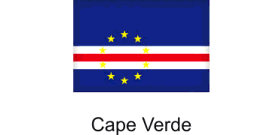 Santo Antão’s Trail Transformation Sets New Benchmark for Nature-Based Tourism in Cape Verde
Santo Antão’s Trail Transformation Sets New Benchmark for Nature-Based Tourism in Cape Verde
The island of Santo Antão in Cape Verde is undergoing a remarkable transformation, positioning itself as a premier destination for nature-based tourism in West Africa. Through a series of coordinated interventions led by the Ministry of Tourism and Transport (MTT) and the Institute of Tourism of Cabo Verde (ITCV), and backed by World Bank financing under the Resilient Tourism and Blue Economy Development Project, the island is seeing tangible improvements to its pedestrian network and visitor infrastructure. These efforts are designed to broaden the tourism offer, enhance resilience, and support local livelihoods, setting a new standard for sustainable tourism development in the region.
Recent concerns about the condition of hiking trails at the start of the high season prompted swift action from authorities. The first phase of the programme has already delivered significant results: 47 kilometres of neighborhood trails have been rehabilitated and signposted across the municipalities of Porto Novo, Ribeira Grande, and Paul. This work, representing an investment of approximately 30,000 accounts, ensures that visitors can now explore the island’s dramatic landscapes with greater safety and clarity.
Complementing the physical upgrades, a comprehensive mapping exercise has been completed, charting an island-wide network totaling 309.1 kilometres. This network is organized into a main route with 12 trunks, 16 ancillary routes, and 15 cross-link paths, providing a structured and accessible way for visitors to experience Santo Antão’s diverse terrain. To further improve wayfinding, teams have installed 55 information panels, 280 directional arrows, and ink markings at strategic locations, making navigation intuitive for both seasoned hikers and casual explorers.
Recognizing the importance of digital visibility in today’s travel landscape, the newly mapped routes have been uploaded to six leading outdoor platforms—Wikiloc, OutdoorActive, AllTrails, Komoot, Visorando, and Trail Trace—under the profile “Percursursos Santo Antão_Cabo Verde.” This strategic move ensures that the island’s trails are now discoverable by international hiking communities and adventure travelers, expanding Santo Antão’s reach far beyond its shores.
The programme is now entering a second phase of investment, with the UGPE Special Projects Management Unit preparing tender documents for further trail rehabilitation and the construction of lookout towers. Plans call for the procurement of two to three lookout towers per municipality, with the next round of trail investments set to exceed 30,000 accounts in each council: Porto Novo (37,000 accounts), Ribeira Grande (42,000 accounts), and Paul (approximately 32,000 accounts). These enhancements are designed to consolidate recent gains and create new vantage points that will enrich the visitor experience and distribute tourism benefits more widely across local communities.
Capacity building and governance are also central to the island’s tourism strategy. Santo Antão is benefiting from the Technical Assistance Project to Support Hiking Tourism in Cabo Verde, a targeted programme delivered by a specialist adventure-tourism firm and funded at a level exceeding fifty thousand in local currency. This initiative aims to strengthen regulatory frameworks, clarify operational rules, and equip local stakeholders—from guides to small enterprises—with the governance, marketing, and business skills needed to thrive in the sustainable hiking tourism sector.
Parallel investments from the Social Sustainability Fund of Tourism are already underway, focusing on accessibility improvements, urban retraining, and guide training with a special emphasis on hiking. These efforts are closely aligned with the ongoing Tourist and Environmental Valuation Program of Rural Villages, which channels targeted upgrades to village infrastructure and market access in the three municipalities. Together, these interventions are creating a more inclusive and resilient tourism ecosystem that benefits both visitors and local residents.
The strategic logic behind these initiatives is clear: make trails safe, legible, and market-ready; expand the economic footprint of nature tourism by linking digital discovery with physical infrastructure; and build local capacity so that communities capture a larger share of tourism returns. For operators and visitors alike, the combined effect is a more diverse range of itineraries, clearer route information, and new products—from viewpoint attractions to community-led services—that encourage longer stays and increased spending on the island.
With a rehabilitated and signposted pedestrian network, enhanced digital visibility across global hiking platforms, and planned investments in lookout towers and additional trails, Santo Antão is now better equipped than ever to attract and serve nature-loving travelers. The island’s commitment to technical assistance and community training further reinforces its role as a leading destination for sustainable tourism in Cape Verde and the wider West African region.
For Africa’s travel sector, Santo Antão’s experience offers valuable lessons in how targeted investment, digital innovation, and community empowerment can work together to unlock the full potential of nature-based tourism. As the island continues to build on its recent successes, it stands as a model for other destinations seeking to diversify their tourism offerings, strengthen local economies, and deliver unforgettable experiences to visitors from around the world.
